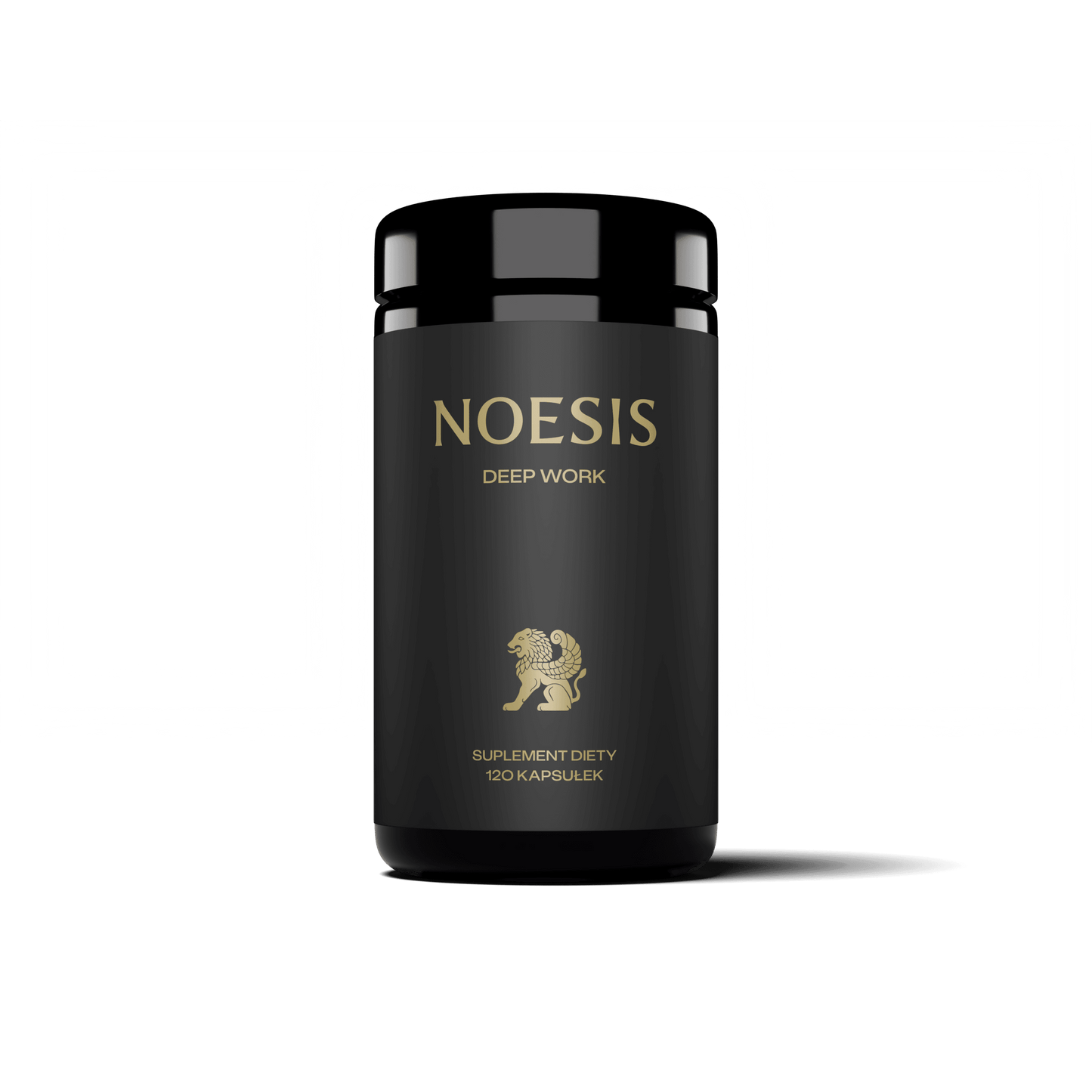
Each of us has goals. We want to be healthier, better organized, more focused, more... organized. But we know one thing for sure - desire alone is not enough. Motivation comes and goes. And habits? They stay. They are the silent heroes of every change. They are the ones that make you do what is important, even when you don't feel like it. That you get up in the morning and take that one small step in the right direction. Effectiveness doesn't start with great revolutions. It starts with one conscious step. Then another. And more.
How to build lasting habits?
Imagine that building discipline is like building a house. The foundation of this structure is daily habits. A good habit is a brick added to a solid foundation. Without developed habits, we must spend energy and time each time making decisions: is it worth doing something? Habits eliminate these dilemmas, automating actions and allowing you to manage your life.
Habits are automatic behaviors that we perform without thinking about them. An example is fastening your seat belt in a car. Imagine if every time you had to think about whether to fasten your seat belt, analyze the risk, and argue the point of doing so. That would be tiring, right? It's similar with habits. Thanks to them, we can consistently achieve our goals, step by step, and the process of achieving them becomes natural.
Building habits is systematic work on yourself. In the long run, repetitive actions change our attitude towards work, learning or personal development and have a long-term impact on our good mood. Each habit strengthens our consistency. As a result, everyday duties become easier and long-term goals more achievable.
What does a habit consist of?
The habit cycle consists of four elements: trigger, desire, response, and reward. Each of these stages plays a key role in the process of creating a habit. Understanding how they work is essential to effectively building and maintaining habits that bring real results and to getting rid of those that take us away from achieving our goals.

Release
This is a signal that triggers a habit. It can be a specific time of day, place, activity or emotion. This is what initiates the process, reminding our brain about a given action. The sound of an alarm clock in the morning, the smell of coffee, the sight of a gym or the stress we feel - all of these stimuli can act as a trigger. The key is for it to be predictable and repeatable, so that the brain connects it with a specific behavior.
Desire
It is the driving force behind the entire cycle. It is something that causes a desire to satisfy a specific need. This desire makes the trigger not just a neutral stimulus, but a stimulus that provokes action. It could be a desire to feel better after a morning run, satisfaction after completing a project, or relief after solving a problem. Without desire, the cycle would not make sense – it is what gives it direction and strength.
Reaction
It’s a specific behavior that we perform in response to a trigger and a desire. This is where the habit becomes an action. It could be getting out of bed at dawn, starting a workout, or reaching for your phone. The response should be simple and achievable, especially in the early stages of building a habit. If it’s too complicated, there’s a risk that it won’t become a permanent part of our daily routine.
Prize
This is the element that closes the habit cycle. It is the one that strengthens the desire, it is the pleasure that makes us want to repeat the action. Thanks to the reward, people feel satisfaction and fulfillment. A well-chosen reward strengthens the habit, making it more and more automatic.

Let's discuss this using a morning run as an example.
- Trigger: Alarm clock sounding at 6am.
- Desire: Wanting to feel better, be healthier and start the day with energy.
- Reaction: Get out of bed, put on sports clothes, and go for a run.
- Reward: Feeling of energy, satisfaction and pride after completing a workout.
Through the repetition of this cycle, our brain automates the process. With each repetition, the alarm becomes a stronger trigger, the desire for energy and well-being intensifies, and the post-workout reward reinforces the entire pattern. As a result, running is no longer a conscious decision – it becomes a natural part of the daily routine.
How to effectively use the habit cycle to build lasting change?
To effectively use the habit cycle, it is crucial to approach each of its elements consciously. Choose a trigger that will fit naturally into your daily life. The more predictable and repeatable it is, the easier it will be to build a habit. Think about why you want to introduce a given habit. A strong desire makes it easier to overcome initial difficulties and motivates you to act. Make the response achievable, not problematic. If your goal is to run every day, prepare your sportswear in the evening so that you do not have to look for excuses in the morning. On the other hand, if your goal is to limit your phone use before bed, do not bring it with you to the bedroom.
Remember that changing habits takes time and patience. The “trigger-craving-response-reward” cycle is a proven mechanism that, when used properly, will help you achieve your goals, both daily and long-term.
How to choose the habit that will bring the greatest value?
The key to success isn’t the quantity of habits, but the quality. Before building a new habit, ask yourself, “What’s the smallest step I can take today that will give me the biggest results in the future?” First, you need to set your priorities. If your goal is to improve your health, you might want to focus on habits like drinking water regularly, stretching daily, or cutting back on processed foods.

It is worth considering practicing a “master habit,” one that will trigger positive changes in other areas of your life. An example is a daily planning of your day, which increases productivity, improves organization, and makes it easier to manage responsibilities. Such a habit has an impact on various areas of life, supporting personal and professional development.
How to fight putting things off until later, or procrastination and gradually overcoming difficulties?
Procrastination, or the voluntary delay in completing tasks, is one of the most common enemies of effective goal achievement. It can slow down progress and discourage you from achieving your goals. The most destructive effect of procrastination is remorse and guilt, which significantly reduce the willingness to act, apart from the growing stress associated with not fulfilling your duties. Every uncompleted task becomes a burden.
Procrastination increases stress levels and reduces our efficiency. People have the illusion that a task will be easier in the future, which rarely turns out to be true and is the cause of postponing tasks. The mechanism of procrastination often results from thinking in black colors. Tasks seem more difficult than they actually are, and delaying their completion is caused by an unjustified fear of action. The mind exaggerates obstacles, which makes every action seem unattainable. The longer you think about a given activity, the greater the risk of procrastination. Each completed task, even the smallest one, is a victory in the fight against procrastination and strengthens the sense of agency and autonomy.
Becoming aware of the procrastination mechanism is the first step to overcoming it. Although the procrastination mechanism has its roots in natural mental processes, its flaws are undeniable. It leads to decreased productivity and poorer well-being. When we understand that procrastination is a natural reaction to perceived difficulties, we can start to control it, and thus effectively eliminate it. Each completed task raises energy levels and improves the quality of life. It is in the gradual overcoming of difficulties that the power of building lasting habits lies. When goals become feasible, procrastination loses its power, and we gain control over our own lives.

Breaking down the elements of a task. How to plan individual steps to success?
Building habits starts with small steps. A list, a realistic schedule, and consciously completing specific tasks help fight procrastination.
Writing out the elements of a task is an effective technique that supports self-management, which helps eliminate factors that inhibit our development. It involves dividing a large task into smaller parts and completing them in a given time. Planning the steps makes it easier to maintain priorities and reduces the risk of putting off completing a given task. Thanks to this, instead of looking at the task as one overwhelming challenge, we see a series of feasible actions that build our self-confidence and willingness to continue.
Breaking tasks into smaller chunks and planning activities is key to keeping your energy levels high. Every completed task increases your sense of achievement and brings you satisfaction. Every time you complete a certain part of your work, your brain sees it as a success, which boosts your energy levels and positive thinking. The more of these small accomplishments, the stronger the urge to take on more challenges.
Creating a list of tasks and a schedule for their implementation is an essential element of effective planning. A list allows you to gather all your responsibilities in one place, which increases your awareness of the tasks waiting for you and makes it easier to prioritize them. A schedule, on the other hand, allows you to set realistic time frames for completing individual stages of work, which reduces the risk of putting things off until later. Lack of management in your life becomes a cause of wasting time and procrastination.

Taking action is the key to achieving success.
Performing specific tasks at the right time is the foundation of effective self-management. The habit of performing daily duties minimizes the risk of procrastination and increases the sense of agency. Regularity makes tasks easier to complete, which translates into long-term effects. In practice, each action taken increases self-confidence and expectations towards oneself.

How to stay motivated over the long term?
Maintaining motivation requires systematic rewarding for achievements. Rewards for smaller goals increase the sense of pleasure from the actions performed. The desire for revenge for previous failures can additionally motivate taking on new challenges. The desire to act increases when we appreciate even small successes
How to build effective habits?
Building effective habits can significantly improve the quality of life. It requires time, awareness, and self-management. To effectively build habits and avoid procrastination, we must be present enough in the moment. Make decisions consciously and focus on current activities. The key to success is understanding what a habit is, fighting procrastination, taking action, and effectively managing your responsibilities. Consistency and systematic action make even the most difficult goals achievable.







